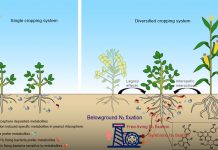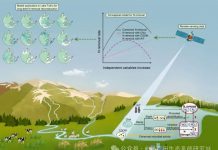Li T Wang HY Zhou ZJ Chen XQ Zhou JM. A nano-scale study of the mechanisms of non-exchangeable potassium release from micas. Applied Clay Science 2015 118: 131-137
Abstract
Non-exchangeable potassium (NEK) is released from minerals by chemical extraction methods through dissolution and cation-exchange reactions. Assessing the contribution of these two processes to release budgets is important to predicting plant-mineral interactions and soil sustainability. Three NEK extraction methods 1 M boiling nitric acid (HNO3) 2 M hot hydrochloric acid (HCl) and 0.2 M sodium tetraphenylboron (NaTPB) were applied to investigate the mechanisms of NEK release from trioctahedral biotite and dioctahedral muscovite. Atomic force microscopy and X-ray diffraction were used to investigate the surface morphology and transformation of mica respectively. NEK released from biotite and muscovite through cation-exchange reaction accounted for 87.88% 85.93% and 83.23% 78.31% of the total extracted K when extracted by boiling HNO3 and hot HCl respectively with channel and elliptical dissolution pits on mica surface. NEK extracted by NaTPB was an almost complete cation-exchange reaction and the extracted micas showed an obvious vermiculitic character and no dissolution features. Results showed the release of NEK from micas is essentially a cation-exchange reactions in both acid and salt solutions indicating that NEK released through cation-exchange reaction but not via dissolution may make up the main soil K pool available to plant.







